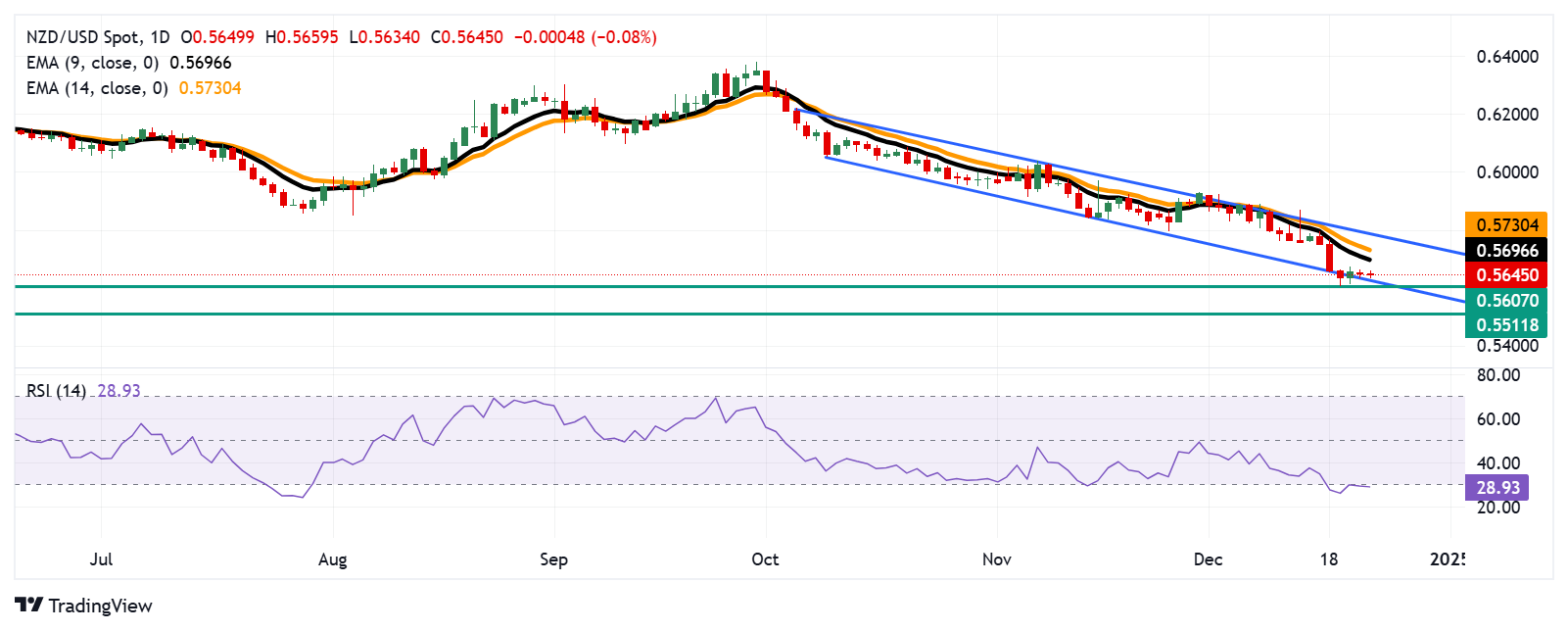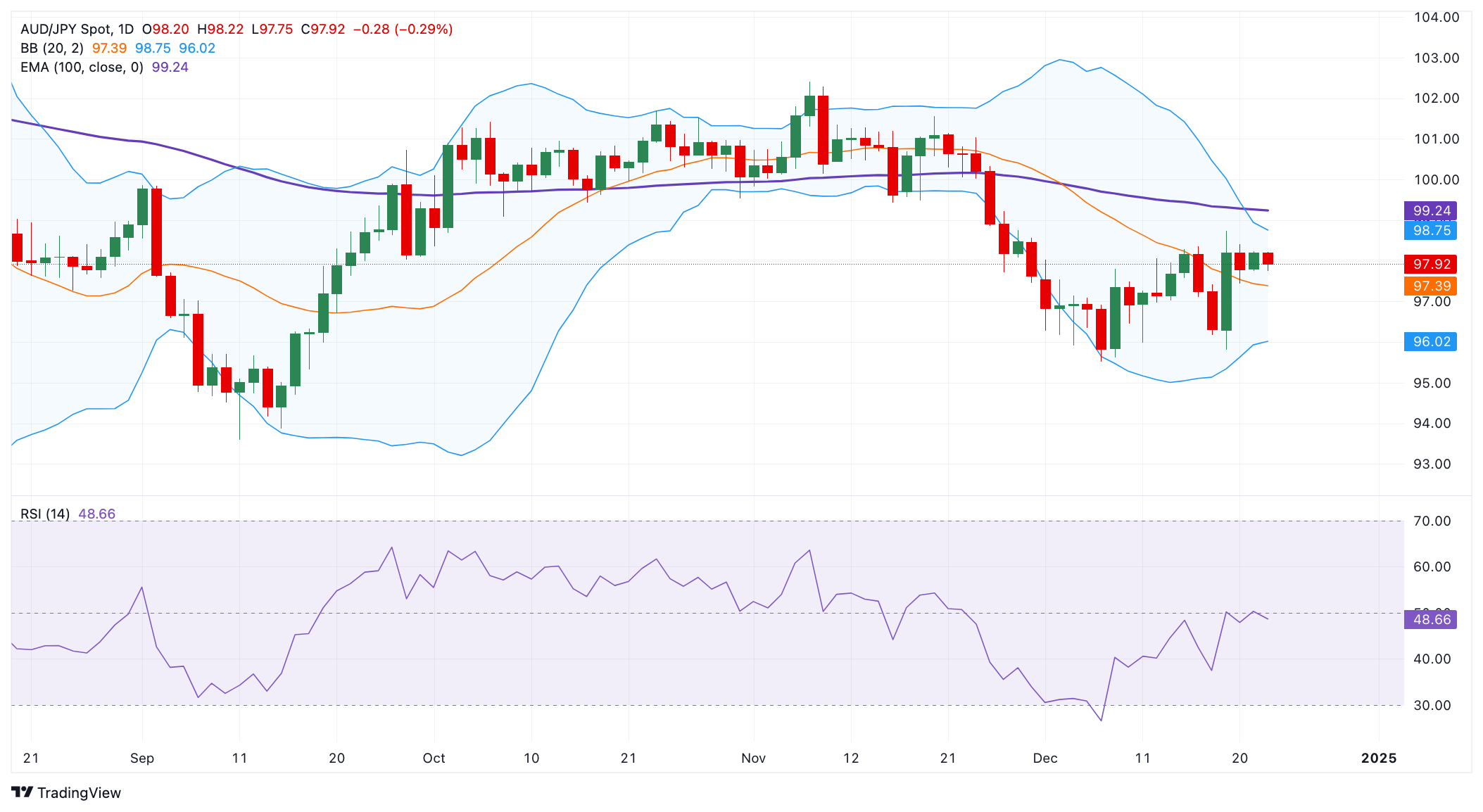- Аналітика
- Новини та інструменти
- Новини ринків
Новини ринків
- Gold remains steady near $2,610 as the US Dollar continues to strengthen.
- Fed signals fewer rate cuts next year, reducing upward pressure on Gold.
- XAU/USD faces downward pressure as it tests 100-day SMA support.
The Gold price remains relatively steady around the $2,611 mark, as market participants adjust to a more cautious outlook on US interest rates. The broader backdrop shows the US Dollar retaining its strength, supported by expectations that the Federal Reserve will adopt a slower pace of rate cuts in the coming year. Fed officials have indicated that fewer rate cuts are likely than previously anticipated, with expectations for the federal funds rate to reach 3.9% by the end of 2025. This shift comes amid a slower disinflation process and the uncertainty surrounding President-elect Donald Trump’s policies on immigration, trade, and taxes.
The fresh Summary of Economic Protections (SEP) triggered a rise in US Treasury yields which tend to be seen as the opportunity cost of holding hold which is another explanation of the metal’s latest decline.
As the market watches these developments, Initial Jobless Claims data, due for release this Thursday, could introduce some volatility for the US Dollar. In addition, Nonfarm Payrolls figures for December, expected in the first week of January, will be closely scrutinized, with the labor market playing a key role in shaping Fed decisions. Despite these events, Gold remains under pressure, unable to break out of the current range.
XAU/USD Technical Outlook
From a technical perspective, XAU/USD is facing significant headwinds. The price remains in negative territory, with indicators showing weak momentum. Currently, the pair is testing the 100-day Simple Moving Average (SMA) support at $2,610, which has been a critical level for Gold in recent months. A sustained break below this level could signal further downside potential, while any bounce could face resistance near the $2,650-$2,670 range. Traders will be closely watching this support level for any signs of a reversal or continuation of the bearish trend.
© 2000-2025. Уcі права захищені.
Cайт знаходитьcя під керуванням TeleTrade DJ. LLC 2351 LLC 2022 (Euro House, Richmond Hill Road, Kingstown, VC0100, St. Vincent and the Grenadines).
Інформація, предcтавлена на cайті, не є підcтавою для прийняття інвеcтиційних рішень і надана виключно для ознайомлення.
Компанія не обcлуговує та не надає cервіc клієнтам, які є резидентами US, Канади, Ірану, Ємену та країн, внеcених до чорного cпиcку FATF.
Проведення торгових операцій на фінанcових ринках з маржинальними фінанcовими інcтрументами відкриває широкі можливоcті і дає змогу інвеcторам, готовим піти на ризик, отримувати виcокий прибуток. Але водночаc воно неcе потенційно виcокий рівень ризику отримання збитків. Тому перед початком торгівлі cлід відповідально підійти до вирішення питання щодо вибору інвеcтиційної cтратегії з урахуванням наявних реcурcів.
Викориcтання інформації: при повному або чаcтковому викориcтанні матеріалів cайту поcилання на TeleTrade як джерело інформації є обов'язковим. Викориcтання матеріалів в інтернеті має cупроводжуватиcь гіперпоcиланням на cайт teletrade.org. Автоматичний імпорт матеріалів та інформації із cайту заборонено.
З уcіх питань звертайтеcь за адреcою pr@teletrade.global.































